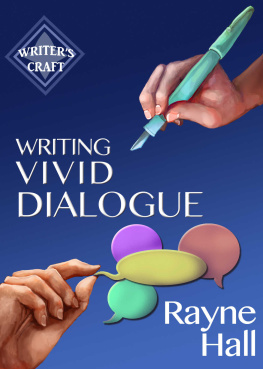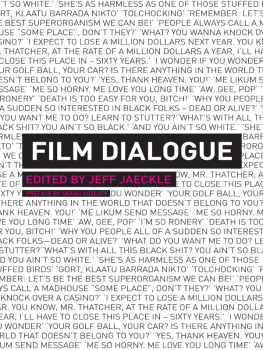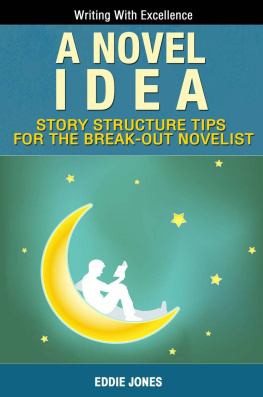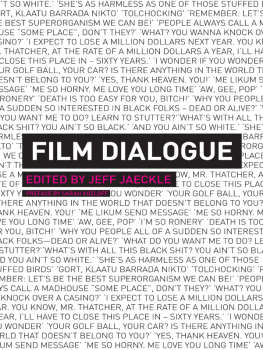Paolo Braga
Words in Action
Forms and techniques of film dialogue

Bibliographic information published by die Deutsche Nationalbibliothek
Die Deutsche Nationalbibliothek lists this publication in the Deutsche
Nationalbibliografie; detailed bibliographic data is available on the Internet
at http://dnb.d-nb.de.
British Library Cataloguing-in-Publication Data: A catalogue record for this book is available from The British Library, Great Britain
Library of Congress Control Number: 2015936244
First published in Italian with the title Parole in azione. Forme e tecniche del dialogo cinematografico by FrancoAngeli, Milan: 2012.
The publication of this book has been made possible through funding by the Universit Cattolica del Sacro Cuore assigned in 2015, based on the evaluation of research results expressed herein.
| ISBN 978-3-0343-1662-0 pb. | ISBN 978-3-0351-0829-3 eBook |
This publication has been peer reviewed.
Peter Lang AG, International Academic Publishers, Bern 2015
Hochfeldstrasse 32, CH-3012 Bern, Switzerland
All rights reserved.
All parts of this publication are protected by copyright.
Any utilisation outside the strict limits of the copyright law, without the permission of the publisher, is forbidden and liable to prosecution.
This applies in particular to reproductions, translations, microfilming, and storage and processing in electronic retrieval systems.
About the author
Paolo Braga is Assistant Professor in Semiotics at the Universit Cattolica del Sacro Cuore in Milan, where he teaches Screenwriting. He has published extensively on the topics of the construction of empathy with character and of U.S. television series. The rhetorical dimension of storytelling is his general research area.
About the book
Words in Action dedicates to the subject of fi lm dialogue a comprehensive exploration. The book analyzes a wide series of examples, perfectly chosen in contemporary American mainstream cinema from Gladiator to The Devil Wears Prada, from Schindlers List to A Beautiful Mind, from Collateral to The Dark Knight and, in some cases, also in prime time TV drama ER, The West Wing, House M.D., John Adams.
In a screenplay, the secrets of well written dialogue are hidden in the construction of the scene, where every word should stem from the theme of the story. At the light of this basic assumption, the book explores how Hollywood screenwriters create verbal duels assigning characters different frames of values and making the hero win by reframing what is at stake in the scene. The author elaborates on how Oscar winner authors such as Paul Haggis, Aaron Sorkin and Steven Zaillian create subtext. Finally, the book highlights the screenwriting techniques to cover exposition, an issue which gives the author also the opportunity to concentrate on the differences between dialogues in movies and in TV drama.
This eBook can be cited
This edition of the eBook can be cited. To enable this we have marked the start and end of a page. In cases where a word straddles a page break, the marker is placed inside the word at exactly the same position as in the physical book. This means that occasionally a word might be bifurcated by this marker.
iv | v Contents
v | vi
vi | vii
viii | 1
In the last scene of The Devil Wears Prada (USA 2006), the protagonist and antagonist of the film randomly catch sight of one another on the streets of Manhattan. By now some time has passed since the young assistant Andrea (Anne Hathaway) rebuffed her boss, Miranda Priestly (Meryl Streep), resisting the temptations of the diabolic director of Runway.
Now that all is said and done, destiny seems to have brought them together for one last time. They have not seen each other since their thorny adieu. Andrea, however, found out that Miranda showed confidence and grace to Andreas resignation by writing a letter of recommendation to an editorial office for her, so she could fulfill her dream of becoming a journalist. The opportunity to thank her ex-boss arrives unexpectedly, right now.
Andrea catches sight of Miranda and stops. The magazine director still hasnt seen her. She walks in haste, searching for her car. She is on the phone complaining, in her usual cross manner, about the driver being late. Then, as the car pulls up to the curb for her to get in, Miranda spots Andrea. She freezes.
For a brief moment, the two women hold each others gaze from opposite sidewalks.
There are no words, but their looks make for intense dialogue.
Andrea hints at a smile. She raises her hand timidly to wave. Her gesture is equivalent to a line that is never said:
ANDREA
The letter Thanks.
Miranda, however, does not wave back.
1 | 2 She is cold, impassible and stares at Andrea from head to toe. She quickly gets into the car. She remains silent, but it is as if Meryl Streep says:
MIRANDA
You still disappointed me. Goodbye.
Andrea just smiles and shakes her head before walking away. She also remains silent, but it is as if she says:
ANDREA
(to herself)
Youll never change. The icy,
one and only Miranda. Ill
never forget you.
Miranda is now inside the car. She takes off her sunglasses the main accessory to complement her look in public. She sits in the back seat and sighs wearily.
Her gesture, the deep look in her eye that has become melancholic, is yet another unspoken line:
MIRANDA
(to herself)
Such solitude I cant take it
anymore.
Miranda then looks up and stares at Andrea, who is walking away. She briefly recalls everything that happened between them and makes peace with herself.
Then, as the screenplay reads, And Miranda, alone, finally breaks into a real smile, the audience picks up the last, unspoken line:
MIRANDA
(to herself)
Good choice, Andrea. As for me
its not easy being the Devil,
but
someone has to do it.
2 | 3 Her brief inner crises is left behind and her normal personality returns to the fore. Miranda looks at the driver and very impatiently says, Go!. With this spoken line, the Devil puts her sunglasses back on and situates herself back into her public figure. She leaves the scene as the car disappears into traffic and the ending credits start to roll.
Another example of a film with a dialogue that has no words, or rather, a dialogue that can only be heard within the minds of the characters and the audience, is The Town.
After robbing a bank, Doug MacRay (Ben Affleck) and his gang have almost made their dangerous escape. Gotten the police off the track, the bandits pull over to switch cars. They spread strands of hair collected from barber shops all over the city in the first car to throw off forensics.
Then something unexpected happens.
The robbers stop in their tracks as they catch sight of a parked squad car on the other side of the street. Its just a patrol car, parked there by chance. There is only one cop inside, whose blood runs from his face as he stares at them five outlaws in latex masks holding machine guns.
No one else is in sight. There are no witnesses. As for the cop, its hard to say whether he is caught off-guard or terrified. The bandits, instead, feel the entire Boston Police Department breathing down their necks.
The criminals and the cop stare at one another. There is a moment of suspense. This dialogue needs no words. The situation says it all, with great accuracy:
BANDITS
Next page





